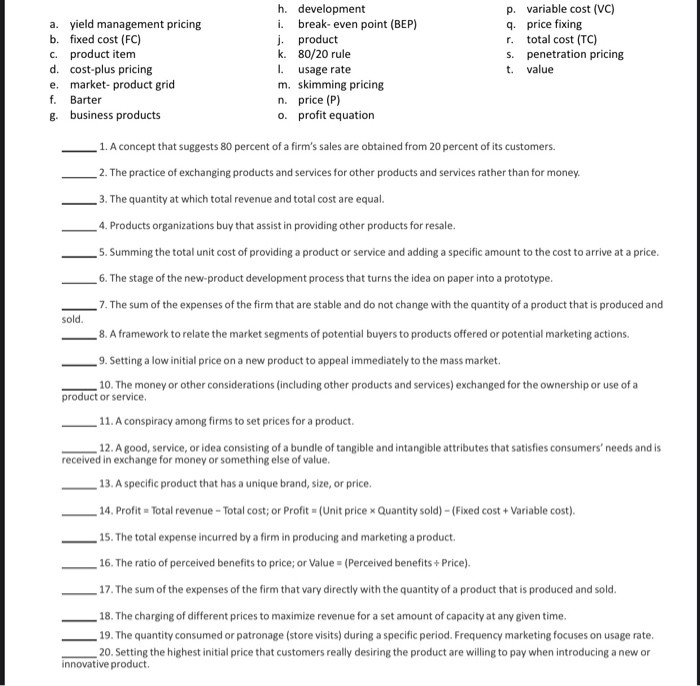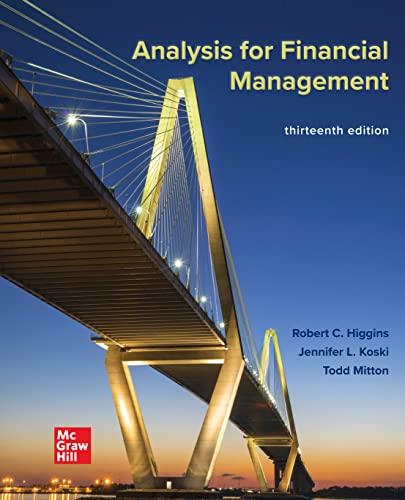a. yield management pricing b. fixed cost (FC) c. product item d. cost-plus pricing e market-product grid f. Barter g. business products h. development i. break-even point (BEP) j. product k. 80/20 rule I. usage rate m. skimming pricing n. price (P) o profit equation p. variable cost (VC) q. price fixing r. total cost (TC) S. penetration pricing value t. 1. A concept that suggests 80 percent of a firm's sales are obtained from 20 percent of its customers. _2. The practice of exchanging products and services for other products and services rather than for money. -3. The quantity at which total revenue and total cost are equal. -4. Products organizations buy that assist in providing other products for resale. -5. Summing the total unit cost of providing a product or service and adding a specific amount to the cost to arrive at a price. 6. The stage of the new product development process that turns the idea on paper into a prototype. -7. The sum of the expenses of the firm that are stable and do not change with the quantity of a product that is produced and sold. 8. A framework to relate the market segments of potential buyers to products offered or potential marketing actions. 9. Setting a low initial price on a new product to appeal immediately to the mass market. 10. The money or other considerations (including other products and services) exchanged for the ownership or use of a product or service 11. A conspiracy among firms to set prices for a product. 12. A good, service, or idea consisting of a bundle of tangible and intangible attributes that satisfies consumers' needs and is received in exchange for money or something else of value. _13. A specific product that has a unique brand, size, or price. _ 14. Profit - Total revenue - Total cost; or Profit =(Unit price x Quantity sold) (Fixed cost + Variable cost). 15. The total expense incurred by a firm in producing and marketing a product. 16. The ratio of perceived benefits to price; or Value = (Perceived benefits + Price). 17. The sum of the expenses of the firm that vary directly with the quantity of a product that is produced and sold. 18. The charging of different prices to maximize revenue for a set amount of capacity at any given time. 19. The quantity consumed or patronage (store visits) during a specific period. Frequency marketing focuses on usage rate. 20. Setting the highest initial price that customers really desiring the product are willing to pay when introducing a new or innovative product







